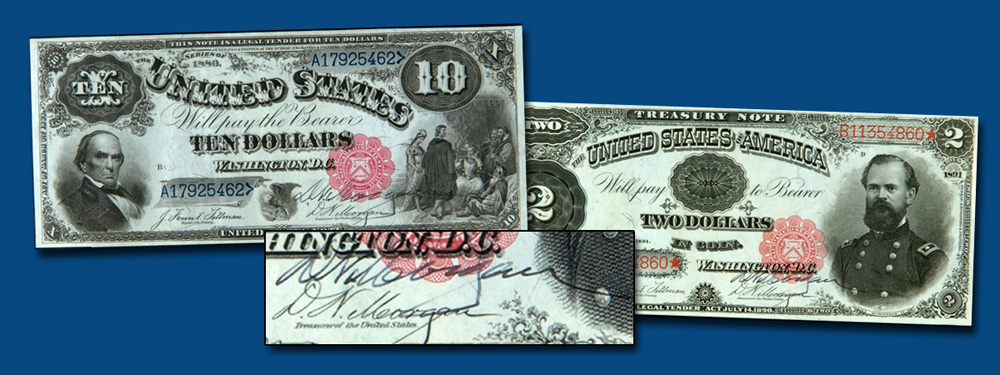
Answer: Daniel N. Morgan was a native of Connecticut and a career banker. He served as treasurer of the United States from June 1, 1893 until June 30, 1897, during which time currency plates were made with his signature, along with the signature of the current register of the Treasury. These signatures were then printed on the paper money.
From June 1, 1893 to June 19 of the same year (only 18 days) the signature combination was that of Morgan and William S. Rosecrans as register. While their time together was short, the printing plates continued to be used later. Despite this, relatively few notes with the Rosecrans-Morgan signature combination exist, and the $5 and $20 Series of 1882 Date Backs are great rarities.
From July 1, 1893 through June 30, 1897, the register was James F. Tillman. During the nearly four years of this combination (and while the plates continued in use) many millions of notes were issued, including the famous 1896 Educational $1, $2, and $5 Silver Certificates.
As for the second hand-written signature, Morgan himself was a collector of autographs. He kept several books of blank pages and invited prominent government officials and others to sign them. Visitors to Morgan’s office in the Treasury Department Building in Washington often exchanged bills with him to get a freshly printed one with Morgan’s inked signature added on the spot. These are called “courtesy autographs” today and they are encountered somewhat regularly in the market, for Morgan as well as other signers.





